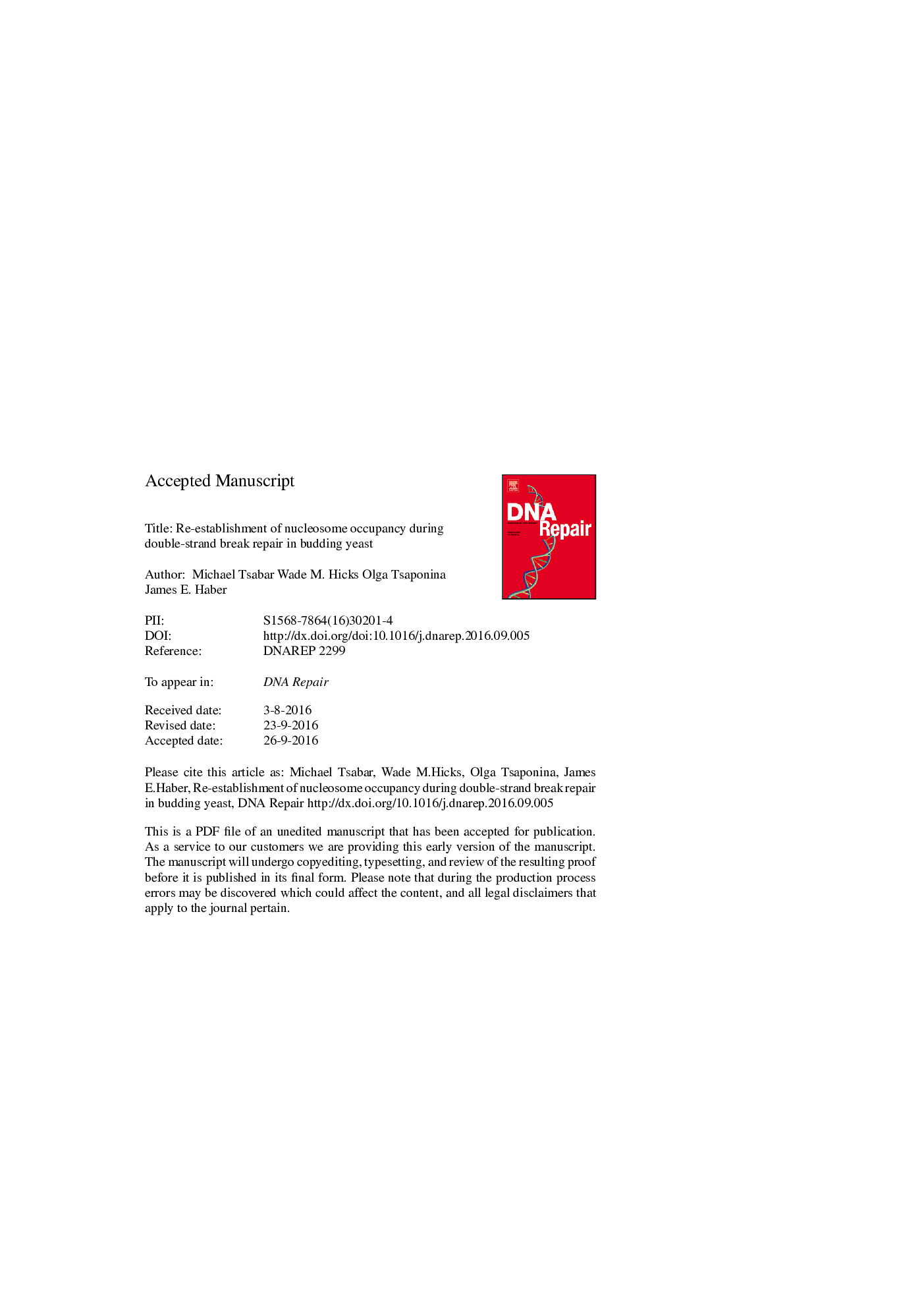| Article ID | Journal | Published Year | Pages | File Type |
|---|---|---|---|---|
| 5511044 | DNA Repair | 2016 | 38 Pages |
Abstract
Homologous recombination (HR) is an evolutionarily conserved pathway in eukaryotes that repairs a double-strand break (DSB) by copying homologous sequences from a sister chromatid, a homologous chromosome or an ectopic location. Recombination is challenged by the packaging of DNA into nucleosomes, which may impair the process at many steps, from resection of the DSB ends to the re-establishement of nucleosomes after repair. However, nucleosome dynamics during DSB repair have not been well described, primarily because of a lack of well-ordered nucleosomes around a DSB. We designed a system in budding yeast Saccharomyces cerevisiae to monitor nucleosome dynamics during repair of an HO endonuclease-induced DSB. Nucleosome occupancy around the break is lost following DSB formation, by 5â²-3â² resection of the DSB end. Soon after repair is complete, nucleosome occupancy is partially restored in a repair-dependent but cell cycle-independent manner. Full re-establishment of nucleosome protection back to the level prior to DSB induction is achieved when the cell cycle resumes following repair. These findings may have implications to the mechanisms by which cells sense the completion of repair.
Related Topics
Life Sciences
Biochemistry, Genetics and Molecular Biology
Biochemistry
Authors
Michael Tsabar, Wade M. Hicks, Olga Tsaponina, James E. Haber,
